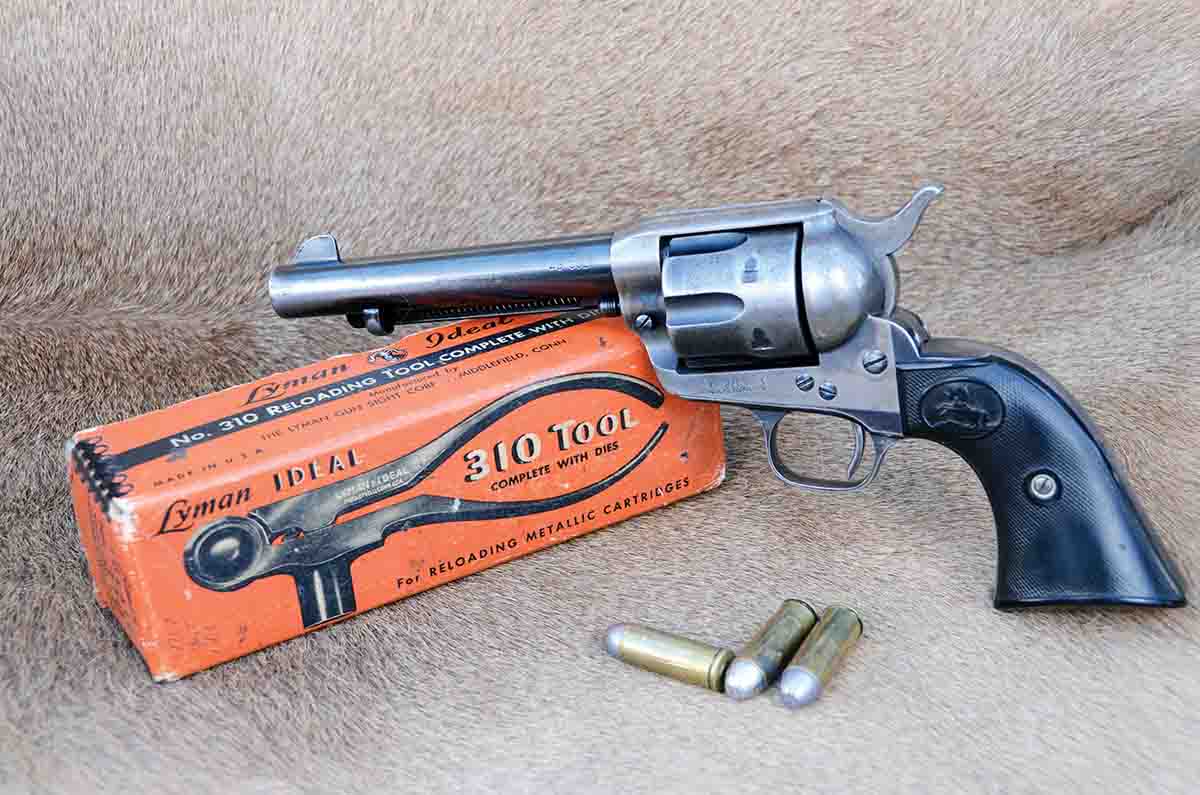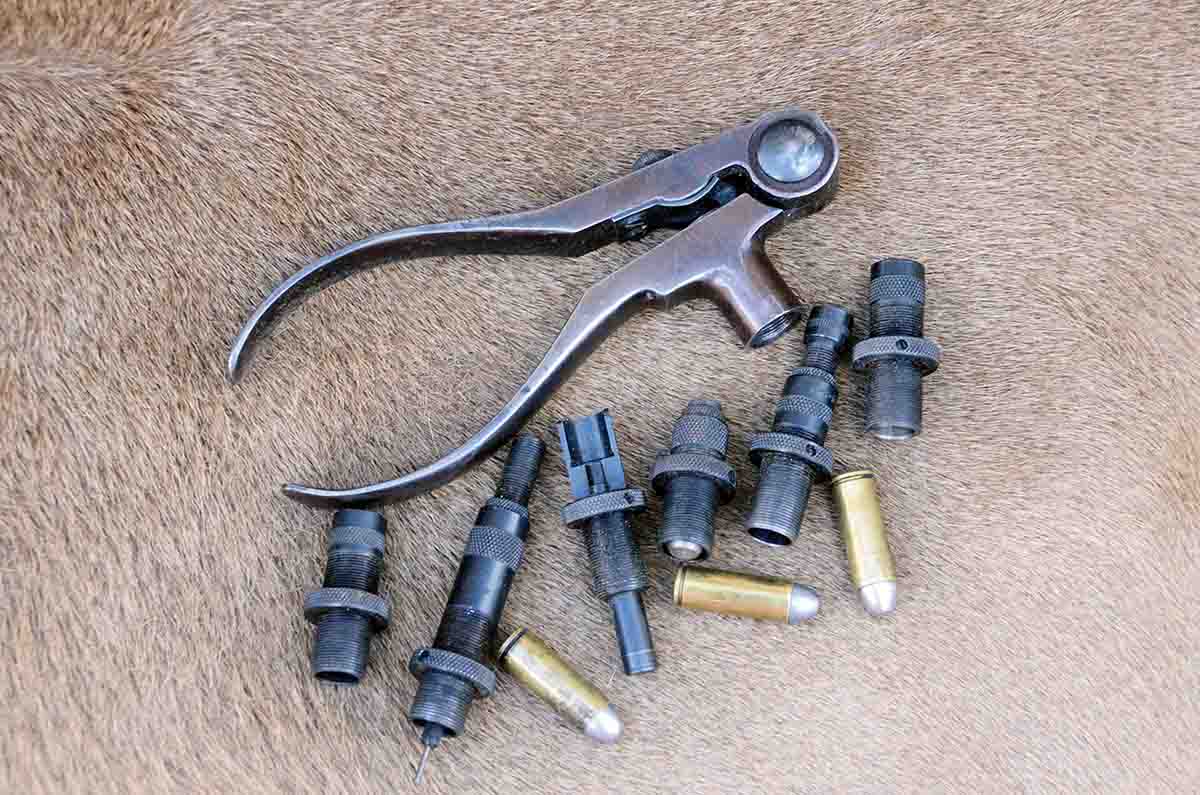Mike's Shootin' Shack
Lyman 310 Tool
feature By: Mike Venturino | October, 20

That true “hand-loading” tool brought back memories from 50 years gone by. Although I had a well-equipped reloading bench at home in West Virginia, during college years I worked summers “out West.” For those trips, I took Lyman 310 Tools with me. The first was a full kit for .38 Special/.357 Magnum. Others came later.
Using that first 310 Tool was indeed a learning experience. One summer, five of us who worked together had .357 Magnum revolvers. We spent several pleasant evenings on the bunkhouse porch using the 310 Tool. The first thing learned was that not all .357 Magnum chambers were alike. The handguns involved were a Smith & Wesson Model 19, Colt SAA, a Uberti Cattleman and two Ruger Blackhawks. We pooled our fired brass from those sixguns and loaded it all together. That was a mistake. Sizing dies in 310 Tools do not full-length resize a case, and we ended up having to sort loaded rounds for all revolvers. At this late date, I don’t remember exactly which revolvers had the largest chambers, but my Colt SAA certainly had the tightest ones. It wouldn’t accept neck-sized cases previously fired in any of the other .357s.
Another fact learned was that brass differed greatly in hardness. Nickel-plated cases were hardest. Sizing 100 or so of those would wear blisters on the user’s hands, albeit handling horses daily made our hands far from soft. Unplated brass was far easier to size. One facet of 310 Tools that I liked immensely was the primer seating die. You could both feel and see primers seating.

Lyman’s 310 Tools operated like old fashioned nutcrackers with the effort supplied by one’s hands. Included in a set were dies for sizing/decapping, case mouth expanding and belling and a priming and seating/crimping die. I took along a fixed-charge powder measure made by the long defunct Lachmiller Company. Its rotor was set for 14 grains of 2400. Not trusting my new-to-reloading buddies, I let them do most of the hand work while I dispensed powder and started bullets in charged cases. Along with the tool, I had brought about 1,000 sized and lubed 150-grain SWCs from Lyman mould 358477.
The history of Ideal/Lyman “nutcracker” tools is too detailed to cover here. Suffice it to say, according to a reprint of a black-powder-era Ideal Handbook No. 5 and an original 1927 Ideal Handbook No. 28, their hand tools were numbered from No. 1 to No. 10. Collectively, reloaders could use them for rifle cartridges from .22-15-45 WCF to .50-110-30 Winchester Express, and for revolver cartridges from .32 Colt Short to .45 Colt.
Obviously, sometime after Lyman Gun Sight Company absorbed the Ideal Company, its No. 3 and No. 10 tools were combined into the 310 Tool, which Lyman Products Corporation still offers today. My search on the company’s website revealed that for 2020, dies are available only for .45 Colt and .38-55. However, a look at eBay showed many die sets and/or complete 310 Tool kits for sale.
Let’s return to the .45 Colt 310 Tool I received with the Colt SAA. During the pandemic shutdown, some time was available to delve into actual “hand” reloading again. However, some familiarization was required to use the kit properly. As noted, the 310 Tools I used 50 years ago came with four dies. This old one had six.
In previous experience, the first die was for neck sizing and punching out old primers. Starting with the die holding the decapping rod, pressed in cases received no resizing at all. I thought, “Okay, what’s going on here?” Bullets intended were from NEI mould 324, dropping at 250 grains from my 1:20 (tin-to-lead) alloy. Sized to .454 inch, they slid loosely into cases that had passed through the 310 Tool’s decapping die.
Therefore, I began searching through the extra dies, and sure enough, I found a separate die just for neck sizing. It worked perfectly, sizing .45 Colt cases to the base of bullets, which incidentally was what those old Ideal Handbooks recommended. My randomly-picked .45 Colt cases could have been fired though no fewer than 10 different revolvers, but after neck sizing, all chambered perfectly in the 1926 Colt SAA.
Next up was case mouth expanding and belling. That die’s stem was marked “.452,” which was fine for .454-inch bullets, but there was a minor problem. The expanding/belling stem increased in diameter quickly. There was a fine line between not belling case mouths enough and belling them too much. If not belled enough, bullets couldn’t enter case mouths. If belled too much, it was difficult to remove cases from the tool. In fact, cases expanded too much had to be pulled free with pliers. With some trial and error I found that fine line where cases were belled properly to accept bullet bases and yet fell freely from the die after belling. That die was then locked down tightly.
Priming cases was next, and just as I remembered, seating primers was a joy. They slipped into primer pockets perfectly and evenly. The powder charge intended was 6 grains of Trail Boss. Since I envisioned loading only 50 rounds with the 310 Tool, charges were hand weighed.
Bullets seated easily with the die I thought was for seating/crimping. Only it was not, as no crimp was applied. That was where the sixth die came into play. It only provided a crimp. Long story short, my actual “hand-reloaded” 50 rounds of .45 Colt shot perfectly. Of course, the test gun was that 1926 vintage SAA with which the 310 Tool arrived. They grouped from about 2.5 to 3.5 inches at 25 yards, and pleasingly printed dead center.
The era when “nutcracker” reloading tools were all that were available for reloading is long past. That said, they can still be feasible if time is available and space is not.


